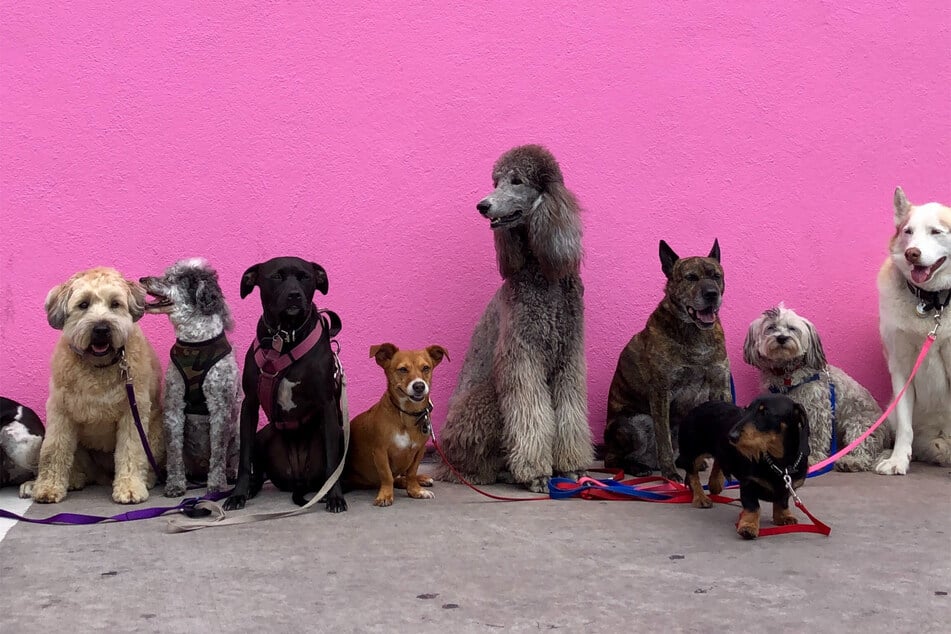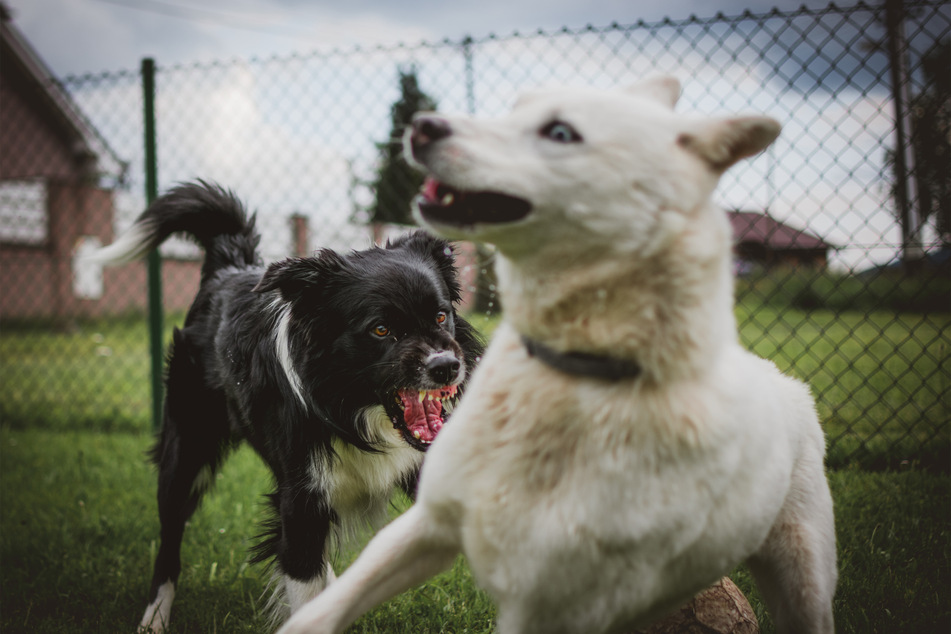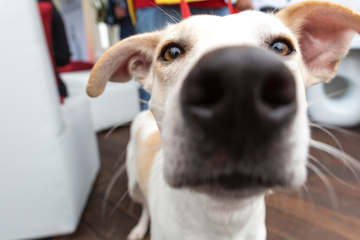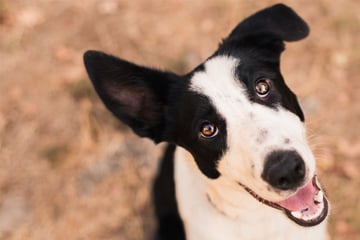How to read dog body language: Dog behavior explained
Dog body language is complex and subtle, but it's vital that you're able to read its behavior if you're a proud pooch parent. So, what do you need to know about dog behavior?

There are few things more difficult to understand, yet more important to have a grasp of, than the body language of your dog. It allows you to gain an insight into how your dog is feeling, what it's thinking, and what you can do to make it more comfortable and happy. Yet few people have truly developed this skill and knowledge, and it's our job to set that right.
In this dog guide, TAG24 will take a look at how to read dog body language. How can you explain dog behavior, what makes your canine companion tick, and how should you respond to certain signs and symptoms? It's time to take a look.
How to read dog body language
The body language of your dog reveals its mood, its opinions, and what it wants at any one time. While not nearly as complex in their communication skills, as we humans are, dogs have a way of telling us what they want and how they want it done. Whether your dog is hungry, feeling cold, wanting to play, or busting for the toilet, it will make itself known quickly and clearly.
Interestingly, despite their lack of language knowledge, dogs can communicate complex needs quite clearly if you know what to look for. It's with this in mind that we express how incredibly important it is that you know how to read dog body language and understand dog behavior.
There are five key parts to a dog's body language
- How does it hold its back? Is your dog's back arched? Is its posture tense and careful, ready to pounce or ready to run? Or, perhaps, is your dog loose and easy-going; is it floppy and relaxed? Look at the tension and the shape of your dog's back - the tenser, the more frightened or angry your dog is, the looser, well, the opposite.
- What is it doing with its eyes? If your dog's eyes are relatively soft and are a bit squinty and relaxed, they are likely to be happy and calm. Dog eyes that are wide open, stiff, and staring indicate a dog that is frightened, angry, or excited in some way.
- Is its tail wagging? Tail wagging is a complicated and important thing to develop an understanding of, as we discussed in our dedicated article on the wagging of dogs' tails.
- What's its facial expression? While dogs may have some similar facial features to us humans, their expressions are not the same. For example, when a dog licks its lips, it is often out of nervousness, not hunger. Smiles may simply be the baring of teeth and, therefore, an aggressive act. A yawn is often more to relieve stress than to convey tiredness.
- Is its fur/hair on end? Much like in cats, if your dog's hair - especially along its spine - stands on end, then it is feeling nervous, aggressive, under threat from another dog, or in danger.
Taking note of, and then paying attention to, these parts of a dog's body language is crucial for developing an understanding of and a better relationship with your perfect pooch.
Dog tail body language
Your dog's tail will behave differently depending on when it is happy, angry, uncertain, or scared. Indeed, its tail is by far the most expressive part of its body and where you can often read a lot of its emotions and moods. For example, if your dog is wagging super quickly and excitedly, this could indicate over-stimulation or even just something as simple as happiness.
The body language of your dog's tail displays is a crucial thing to pay attention to, as it will indicate what it wants at any given moment. If its tail is flicking while you pet it, this could indicate annoyance and a desire for you to stop the petting process, for example. It's worth paying attention to!
Dog body language while sleeping
Different positions indicate different emotions and needs when a dog is sleeping. When it lies on its side, for example, it is feeling relaxed, but if it is lying in a lion-like position, it is feeling a little at risk and wants to be ready to move quickly if necessary. A dog's sleeping body language is so useful, in fact, that you can even tell if a dog is having trouble breathing based on its positioning.
Dogs don't generally like being touched when they are fast asleep but at times will sleep in positions that indicate that they do want to be petted. As a result, it is a good idea to pay attention to your dog and its sleeping habits. What does it respond well to in which position? Find out and apply your knowledge!

Aggressive or dominant dog body language
Aggressive dogs will be significantly up-tight, bark a lot, and have big wide eyes and bared fangs. It is very obvious when a dog is angry and aggressive because it will arch its back and make itself look a lot bigger than it actually is (the same goes for dominant dogs).
Signs of an angry or dominant dog include:
- Staring hard and intensely
- Lunging at you
- Attempting to bite
- Snapping its jaws and teeth
- Growling
- Barking/snarling
- Tense body
- Pounce position
- Stiff tail
- Fur/hair on end
If you come across aggressive dogs, it's certainly best to steer clear. We are not well-equipped to fight off angry dogs without weapons - they are often much stronger and more brutal than we are, so it's best to just avoid the situation entirely, to be honest.
Keep these thoughts in mind when you encounter a dog in the wild or on the street. If it displays any of these symptoms, get out of there quickly!
Stressed dog body language
If your dog is stressed but not feeling angry, or if it is scared but not feeling like retribution, it will display very different symptoms. The body language of a stressed dog is just as uptight as an angry dog but in a submissive and vulnerable way designed to tell other creatures that it is not a threat.
Signs of a stressed-out dog include the following:
- Big wide eyes, with the whites exposed
- Ears tucked back against the head
- Fur/hair on end
- Tail tucked between the legs
- Excessive panting
- Yawning
- Licking of the lips
- Yelping
Stressed dogs can become aggressive if not reassured, as they are not always the best at handling emotion. Look out for the symptoms and, if they appear, offer your support and unconditional love.
Dog body language when meeting another dog
When a dog meets another dog it could react in a friendly and inquisitive way, an overly-excited way, or a stand-offish way. Whatever it is, it's best to understand and recognize the symptoms when they arise so that you can react quickly and firmly if something goes wrong, therefore avoiding potential issues.
Understanding dog behavior when meeting other dogs
- A happy and relaxed dog will: Move slowly, avoid eye contact, have small and soft-looking eyes, and look relaxed with very little tension.
- An angry or aggressive dog will: Stare intensely, lay its ears flat, stand up really straight, bare teeth, growl, and circle.
- An excited dog will: Have wide eyes, fast-moving tails, joyous jumping, light yapping, smile, and will sniff the other dog's butt.
Pay special attention to dog behavior and dog body language when there are other canine companions around. You don't want your perfect pooch involved in an altercation!
What should you do if a dog is displaying concerning body language?

If your beloved canine companion ever displays worrying or problematic symptoms, it should be taken immediately to the vet. Whether that's a symptom of illness or simply a symptom that something is seriously wrong, but as yet unknown, you are not equipped to make diagnoses as a dog owner.
Medical professionals will be able to help you out and will make sure that every step is taken to keep your doggo as healthy as can be. They are always your best bet when a dog displays worrying body language signs and should always be your first port of call.
Dog behavior can be hard to explain
There's something about dog behavior that will always be a mystery. We're not dogs, so, quite simply, our understanding and responses to dog body language and behavior will forever be based on scientific research and circumstantial experience. That doesn't make it unhelpful, though, because the more understanding that we have, the better our dog-human relationships will be.
The fact is that we don't necessarily know what a dog wants, and, as a result, it's not unlikely that even the most informed among us will mistake certain behaviors for things that they are not - after all, it ain't an exact science!
Cover photo: Unsplash/Hannah Lim



